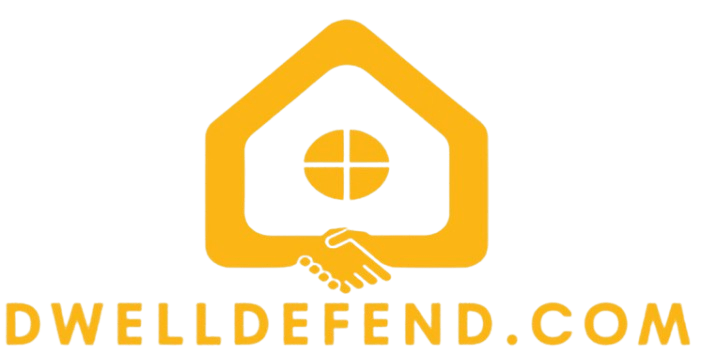Home Insurance Claims: A Complete Overview
Navigating the realm of home insurance claims can feel overwhelming. However, understanding the process is essential for homeowners like you.
From property damage to liability concerns, familiarizing yourself with the types of claims you may encounter will prepare you for the unexpected.
This guide lays out the fundamentals of home insurance, explores various claim types, and provides a clear, step-by-step roadmap for filing a claim.
With practical tips on documenting damages and negotiating with insurers, get ready to tackle any challenge with confidence!
Contents
Key Takeaways:

Home insurance provides financial protection for homeowners in the event of unexpected damages or losses to their property.
The three main types of home insurance claims are property damage, liability, and loss of use.
Documenting damages and losses is crucial when filing a home insurance claim, as is negotiating with insurance companies to ensure a successful outcome.
Understanding Home Insurance Claims
Understanding home insurance claims is essential for you as a homeowner, ensuring you are adequately protected during unexpected disasters. Refer to this step-by-step guide to your home insurance claim for detailed information.
By understanding the claims process, you can navigate the complexities of filing for damages and securing necessary repairs with confidence. For more details on this, check out what to expect from home insurance claims. Homeowners insurance serves as a safeguard for your property and personal belongings against various risks.
It s crucial to familiarize yourself with the specific terms and conditions of your policy to achieve a successful settlement.
Understanding the claims process helps you maximize your coverage during challenging times. Knowing what documentation you ll need like proof of purchase and inventories of lost items will enable you to minimize expenses.
What is Home Insurance and How Does it Work?
Home insurance, commonly known as homeowners insurance, is a vital form of property insurance that shields you from a range of risks tied to homeownership.
It provides financial protection against damages to your property, personal belongings, and even liability for injuries sustained on your premises.
This essential coverage acts as a safeguard against unexpected incidents, such as fire, theft, and natural disasters, while also addressing various personal liabilities that may arise.
For homeowners like you, maintaining adequate coverage limits is crucial, especially when considering mortgage requirements imposed by lenders. You have several policy options at your disposal, including basic, broad, and special forms, each designed to offer tailored coverage that meets your specific needs and risks.
Insurance companies typically assess these policies based on your home s value, location, and individual circumstances, ensuring that you have the right protection for your most valuable asset.
Types of Home Insurance Claims
Homeowners may find themselves needing to file various types of home insurance claims, and knowing what to expect during a home insurance claim can help address specific coverage aspects and unexpected losses.
It s vital for you to understand the distinctions among these claims such as property damage claims for repairs, liability claims for injuries, and loss of use claims for additional living expenses during temporary displacement.
By understanding these options, you can maximize the benefits of your home insurance policy. Being well-versed in the specifics of the claims process with home insurance providers greatly impacts the efficiency with which you rebuild or recover from any disaster.
Property Damage Claims
Property damage claims rank among the most frequently filed claims by homeowners, addressing the costs associated with repairing damages to both the physical structure of your home and any personal belongings impacted by covered disasters.
Navigating the claims process can be quite intricate. You will need to collaborate closely with insurance professionals who evaluate damages.
The clarity of your documentation think receipts and inspection reports and your ability to provide them promptly can significantly influence how efficiently your claim is processed.
Accurately estimating repair costs is essential; a solid grasp of your coverage limits will help ensure that your claim covers as much of the expenses as possible. By staying prepared and informed, you can streamline the process and improve your chances of a favorable outcome.
Liability Claims

Liability claims in home insurance are designed to protect you when you could be held legally responsible for injuries to others or damage to their property that occurs on your premises. This coverage is essential for protecting you from potential financial losses.
These claims can stem from various incidents. For example, a guest slipping on a wet floor or accidentally damaging a neighbor s property during a home improvement project may lead to liability claims. Understanding what qualifies as a liability incident is vital, as it includes the immediate circumstances and the potential legal ramifications.
If you face a claim, don t wait to gather your documentation! You will go through a process that assesses the damages, outlines coverage limits, and determines potential compensation. The significance of liability coverage lies not just in financial protection but also in offering you peace of mind as a homeowner.
Loss of Use Claims
Loss of use claims are your safety net when a property becomes uninhabitable due to damages. This allows you to cover additional living expenses with your home insurance, ensuring you can maintain your standard of living while repairs are underway.
These claims typically encompass a variety of costs, including temporary housing, meals, and other necessary living expenses beyond your usual budget. It s essential to familiarize yourself with the specifics of your policy, including coverage limits and any exclusions that might apply.
Documentation is crucial in the claims process. Make sure to keep all receipts for temporary repairs and housing, along with detailed records of your regular living expenses. This thorough documentation is vital for substantiating your claims and ensuring you receive adequate compensation for those extra living costs.
By staying organized, you can navigate this challenging situation with greater ease.
The Home Insurance Claims Process
The home insurance claims process may appear overwhelming at first glance, but understanding the steps involved can greatly simplify the experience for homeowners. For a deeper insight, check out this comprehensive guide to home insurance providers that can help navigate the complexities.
- Start by promptly reporting the incident to your insurance company and compiling all necessary documentation, such as claim forms, inventories of lost items, and receipts for any temporary repairs you’ve undertaken.
- Next, you’ll collaborate with an adjuster who will evaluate the damages and assess the costs covered by your policy.
Acting quickly is important throughout this process; any delays could affect your settlement and the overall timeline for the repairs you need.
Steps to Take When Filing a Claim
When you’re ready to file a claim with your home insurance provider, there are several crucial steps to take that can help ensure a smooth process and prompt settlement. For detailed guidance, check out this resource on how to file a home insurance claim successfully for any damages you’ve incurred.
- First, carefully gather all documentation related to the incident. This means snapping clear photographs of the damage, keeping receipts for any repairs, and obtaining relevant police or fire reports if applicable.
- Next, it’s vital to reach out to your insurance company; this initiates the claims process and gives you guidance on what additional information they may need.
- After that, preparing for the adjuster’s visit is essential. Organizing all your documentation and having it readily available will make the inspection process smoother, as adjusters will assess the damages during their visit.
Clear communication during this time can lead to a quicker resolution.
Dealing with Insurance Adjusters
Navigating interactions with insurance adjusters is a pivotal part of the home insurance claims journey. They hold the key to assessing damages and determining the settlement amount based on the specific coverage limits of your policy.
Their role typically involves conducting a meticulous inspection of the affected areas, where they will evaluate the extent of the damage in relation to the protection offered by your home insurance policy.
To facilitate this process, it s wise to document everything thoroughly. This preparation will serve as vital evidence to bolster your case.
When communicating with the adjuster, aim to be clear, concise, and forthcoming with information about any prior repairs and maintenance. This fosters trust and aids the adjuster in forming a fair estimate, ultimately leading to a smoother claims experience for you.
Tips for a Successful Home Insurance Claim

Quick action is key to securing a successful home insurance claim. Homeowners must take an active role in managing the claims process. This includes carefully documenting damages and negotiating with insurance companies for a fair settlement.
Maintaining a comprehensive inventory of personal belongings is crucial. Include proof of purchase and receipts to ensure all covered expenses are accounted for.
Understanding your policy’s coverage limits is key. Be prepared to negotiate with adjusters to influence the outcome of your claim.
Documenting Damages and Losses
Accurate documentation of damages and losses is essential when filing claims. This information forms the foundation of your request for financial assistance.
Take clear, detailed photographs from multiple angles to showcase the damage. This provides necessary context for your claim.
Keeping an itemized inventory is also wise. It offers a clear outline of affected items, including their approximate value and condition.
Hold on to all relevant receipts and proof of purchase. These documents are invaluable during the claims process.
By following these best practices, navigating home insurance claims becomes much smoother. A well-organized approach can expedite resolution, reducing your stress.
Negotiating with Insurance Companies
Negotiating with insurance companies can be challenging yet essential. It’s crucial for you to secure a fair claims settlement and receive the maximum benefits allowed by your policy.
Familiarize yourself thoroughly with your policy. Understand which expenses are covered and any limitations that may apply.
Keep meticulous records of all communications with your insurance provider. This documentation serves as a reference and evidence should disputes arise.
Be prepared to advocate firmly for your needs. Armed with evidence and a solid grasp of industry standards, you can approach negotiations with confidence.
Frequently Asked Questions
What is home insurance?
Home insurance protects your home and belongings from damages or losses. It provides financial coverage in case of theft, natural disasters, or accidents.
What are home insurance claims?

Home insurance claims are requests made to your insurance company for compensation due to damages or losses. This applies to your home or belongings covered under your insurance policy.
What types of damages or losses are covered under home insurance claims?
Home insurance claims usually cover damages from fire, theft, vandalism, natural disasters, water damage, and personal liability. For more details on how to navigate this, you can check out what is the claims process for home insurance? Coverage may vary depending on your specific insurance policy.
How do I file a home insurance claim?
To file a claim, contact your insurance company as soon as possible after the incident. Provide details about the damages and supporting documents like photos and receipts.
What is the process for home insurance claims?
The claims process may vary by insurance company and the extent of damages. Generally, report the incident, provide documentation, and wait for the claim to be reviewed and approved.
Filing a home insurance claim can increase your premium. Insurance companies may view you as a higher risk after a claim.
Before deciding to file, consider the cost of damages against the potential rise in your premium. Understanding your premium what you pay for coverage is essential to making an informed choice.




